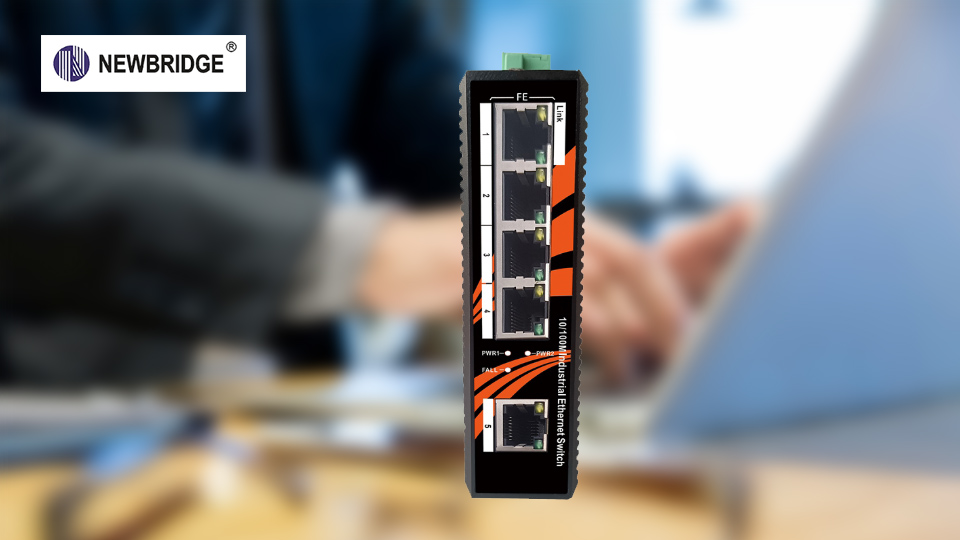In industrial environments, industrial switches play a crucial role in network connectivity. However, frequent network disconnections may occur at times, which not only affects production efficiency but may also cause inconvenience. Here are 5 possible reasons for frequent network disconnections in industrial switches and corresponding solutions.

Reason 1: Power supply issue
Industrial switches require a stable power supply to maintain normal operation. If there are fluctuations in the power supply, unstable voltage, or faults in the power supply line, such as aging power lines, poor contact, etc., it may cause intermittent power outages in the switch, leading to frequent network disconnections.
Response plan:
Firstly, reliable and compatible power supply equipment should be used to ensure stable output of voltage and current that meets the requirements of the switch. Regularly check the connection of the power cord to see if there are any signs of looseness, damage, etc. If there are any problems, replace the power cord in a timely manner. In addition, an uninterruptible power supply (UPS) can be equipped to ensure a continuous and stable power supply to the switch in case of fluctuations or brief power outages, reducing the risk of power outages caused by power issues.
Reason 2: High network load
When there are too many devices connected to an industrial switch, or when network traffic suddenly increases during a certain period of time, exceeding the processing capacity of the switch, it is easy to cause network congestion, resulting in data transmission delays or even interruptions, ultimately manifested as frequent network disconnections.
Response plan:
Reasonably plan and control the number and usage of devices in the network. Network management tools can be used to monitor the traffic situation of various ports, analyze peak traffic periods and traffic trends. If it is found that the load is often too high, consider upgrading the switch, choosing a model with higher port bandwidth and stronger forwarding ability, or dividing the network reasonably, using VLAN (Virtual Local Area Network) and other technologies to divide devices with different functions and traffic requirements into different VLANs, reducing broadcast domains, alleviating network congestion, and improving overall network performance.
Reason 3: Hardware malfunction
Long term operation and harsh industrial environments (such as high temperature, high humidity, and high dust) can all cause damage to the hardware components inside the switch, such as chip overheating, port damage, and circuit board aging, which can affect the normal data forwarding function of the switch and lead to frequent network outages.
Response plan:
To ensure that the switch operates under suitable environmental conditions, install cooling devices such as fans as required, maintain good ventilation, control the ambient temperature and humidity within the specified range, and take dust prevention measures, such as regularly cleaning the dust on the surface and inside of the switch. At the same time, establish a regular equipment inspection mechanism to promptly identify potential hardware issues. Once signs of hardware failure are detected, promptly contact the manufacturer's after-sales service for professional repair or replacement of faulty hardware components.
Reason 4: Network Loop
In the process of industrial network cabling, if there is an error in the connection of the network cable, such as the two ends of the network cable being connected to different ports of the switch at the same time, a network loop will be formed. Network loops can lead to a large number of broadcast storms in the network, occupying a significant amount of network bandwidth and switch resources, resulting in frequent network disconnections.
Response plan:
When setting up and wiring the network, it is necessary to strictly follow the design plan to ensure that the network cables are connected correctly and without errors. At the same time, utilizing the built-in loop detection function of the switch (which many industrial switches now have), real-time monitoring of whether there are loops in the network. Once a loop is detected, the switch can automatically take corresponding measures, such as blocking the port that generates the loop, and can also use network management software to assist in troubleshooting the network connection situation, timely discovering and solving loop problems.
Reason 5: Software malfunction or configuration error
The operating system software of the switch may have vulnerabilities or malfunctions, or the configuration parameters of the switch may be incorrect, such as unreasonable IP address allocation, VLAN partitioning errors, improper routing policy settings, etc., all of which may cause the switch to malfunction and result in frequent network disconnections.
Response plan:
Regularly update the operating system software of the switch, install official patches, and fix known vulnerabilities and issues. When configuring switches, professional network engineers should strictly follow the plan and requirements for operation. After the configuration is completed, carefully check whether all parameters are accurate. At the same time, do a good job in backing up configuration files. In case of network disconnection caused by configuration errors, it can be restored to the correct configuration state in a timely manner to ensure the normal operation of the switch.
In short, frequent disconnection of industrial switches is a problem that needs to be taken seriously. By carefully investigating the possible reasons mentioned above and adopting corresponding effective response plans, it is possible to ensure the stable operation of industrial switches to the greatest extent possible, ensure the smoothness of industrial networks, and provide reliable network support for enterprise production and other activities.
